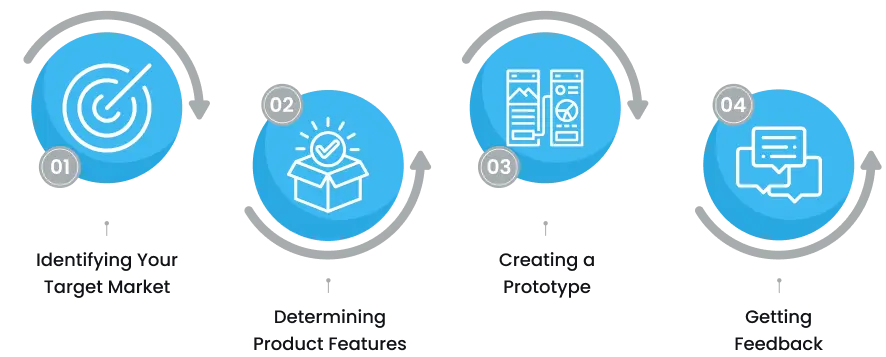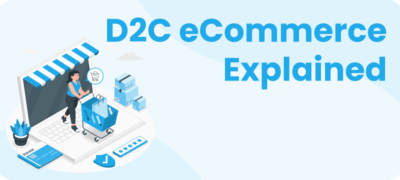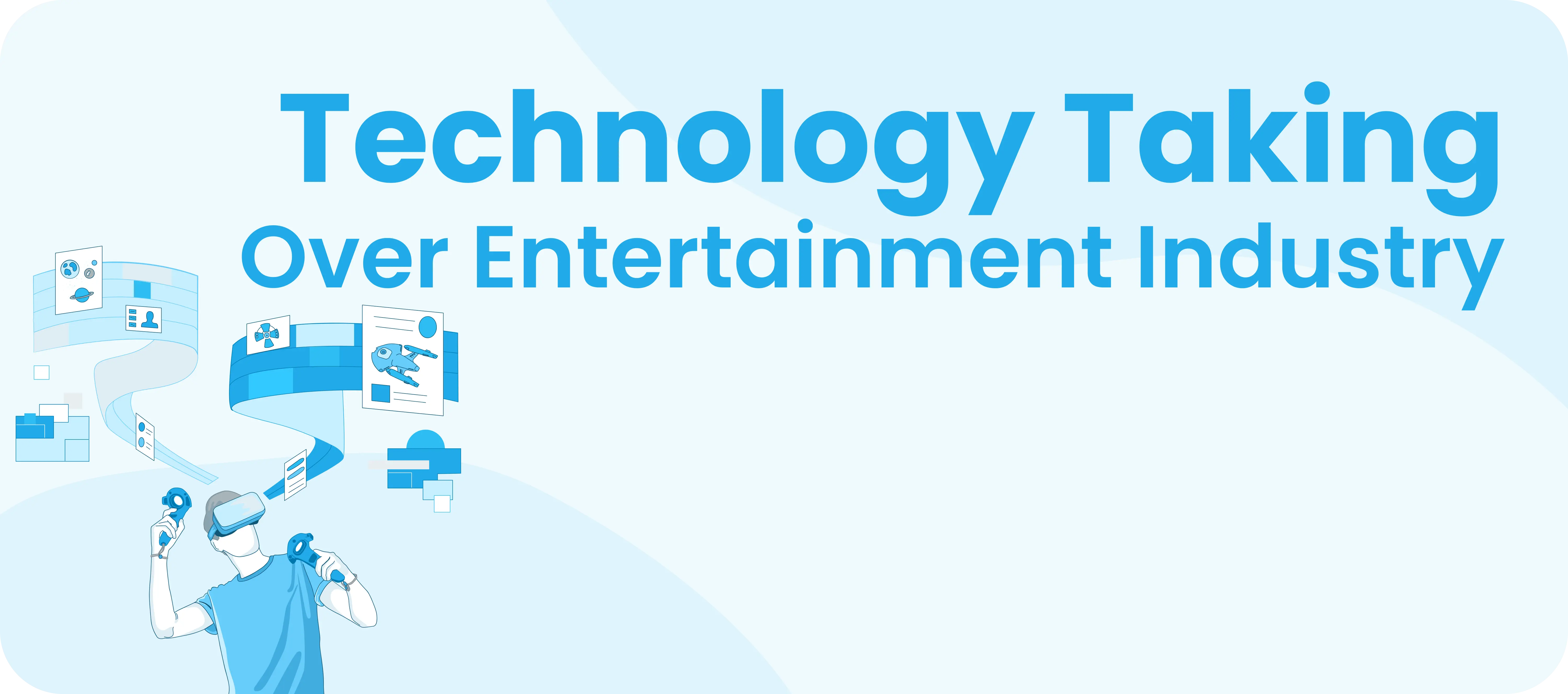The Power of The MVP for Startup Development
Short Description
“The Power of the Minimum Viable Product for Startup Development” examines the meaning of the term “Minimum Viable Product” (MVP) to startup entrepreneurs. The blog outlines the crucial phases in comprehending and putting an MVP strategy into practise, including identifying the target market, deciding on critical features, making a prototype, and getting user feedback. It highlights the advantages of MVP, such as cost and time savings, priceless client input, and risk mitigation. The site also highlights noteworthy firms like Dropbox, Airbnb, and Zappos that have created successful MVPs. It finishes with actionable advice for executing an MVP in a startup, such as the significance of choosing the best development team, establishing a feedback loop, and setting clear goals.
Introduction
Understanding the idea of the Minimum Viable Product (MVP) is essential to your success as a startup founder. A product development technique known as the MVP emphasises building a rudimentary version of your product with just enough features to test your concept and collect insightful user feedback. The MVP strategy enables you to iterate rapidly and save money by avoiding wasting resources on features that your consumers might not find necessary, in contrast to typical product development approaches that require investing a lot of time and resources in producing a fully complete product before launch. You may decide what to build next and improve your chances of creating a product that resonates with your target market by doing an MVP test.
Understanding MVP
Identifying Your Target Market: Finding your target market is one of the first stages in putting an MVP into practise. Establish your ideal client’s characteristics, including their needs, desires, and pain spots. You may better connect your product development with the unique needs of your target clients by establishing thorough buyer personas. You may create a product that answers actual problems with the help of this focused approach, which will increase the likelihood that it will find success in the market.
Determining Product Features: You must carefully choose the essential features your MVP should have at this time. These features are definitely necessary for the basic functionality of your product. Pay special attention to the elements that address the most urgent needs of your target market. Differentiating between “must-have” and “nice-to-have” elements is essential. You may keep a sharp focus on delivering the most valuable features of your product by preventing feature creep.

Creating a Prototype: Making a working MVP prototype is the next stage after determining the essential elements. A wireframe, a primitive version of your product, or a landing page could be used as this. The prototype’s function is to offer a physical representation of your concept so that you can show it to potential users and get their input. Keep in mind that the prototype is just a starting point for validating your concept and gaining practical insights; it doesn’t need to be perfect.
Getting Feedback: After developing the prototype, the MVP approach’ most important step—gathering input from actual users—begins. Participate in user testing sessions, polls, or focus groups to interact with your target market and see how they use your product. Pay attention to their ideas, worries, and suggestions. This input is crucial because it will show you where you may make changes, confirm your presumptions, and learn more about your consumers’ preferences.
Benefits of MVP

Saving Time and Money in Product Development: Startups can escape the drawbacks of protracted, resource-intensive product development cycles by adopting the MVP strategy. An MVP enables you to launch small and lean rather than spending a lot of money up front on a fully functional product. You can develop a functional product more quickly and for less money if you concentrate on its key functions.
Obtaining Valuable Customer Feedback: Early on in the development process, releasing an MVP, provides opportunity to get user feedback. For better understanding how customers view your product and what they actually value, this direct feedback loop is important. With this knowledge, you can make data-driven decisions, iterate on the product, and make minor adjustments to better satisfy the demands of your customers.
Reducing the Risk of Failure: By testing your idea with an MVP, you significantly reduce the risk of building a product that does not meet market demands. The insights gained from user feedback can help you identify potential pitfalls and areas of improvement early on. This allows you to pivot, make necessary adjustments, and ultimately increase the chances of launching a successful product.
Examples of Successful MVPs
Dropbox: Simplified File-Sharing Service: Dropbox’s MVP was a minimal file-sharing service with basic functionality. This allowed users to store and share files effortlessly. The MVP received positive feedback and traction, giving Dropbox the confidence to invest in further development. Over time, Dropbox evolved into a leading cloud storage platform with millions of users worldwide.
Airbnb: Connecting Travelers with Locals: Airbnb’s MVP was a simple website that connected travelers with locals offering accommodations. This concept quickly resonated with users, validating the demand for an alternative to traditional hotels. By iterating on the MVP based on user feedback, Airbnb successfully disrupted the hospitality industry and became a global travel phenomenon.
Zappos: Focusing on Customer Service: Zappos started as an online shoe store, but its MVP was more than just the products. It prioritized exceptional customer service, offering free shipping and easy returns. This customer-centric approach helped Zappos stand out from competitors and led to a loyal customer base. By listening to customer feedback, Zappos refined its service and expanded into one of the largest online retailers for shoes and clothing.
Do you want to start a software product?
We’re considering beginning with an MVP
Common Mistakes to Avoid
Focusing Too Much on Features: One common mistake when implementing an MVP is getting carried away with adding numerous features. Overloading the MVP with unnecessary functionalities can lead to a bloated and complicated product. Instead, focus on delivering the core value proposition and essential features that align with your target market’s needs.
Neglecting Customer Feedback: Failing to gather and act on customer feedback is a critical error in the MVP process. Your target audience holds valuable insights that can shape your product’s direction. Establishing a feedback loop and actively engaging with users will help you continuously improve your product based on real-world input.
Keeping the MVP Too Complex: Another misconception is that an MVP should resemble the final product in every way. However, the primary goal of an MVP is to validate your concept, not create a fully polished product. Keeping the MVP simple and focused on the core features will allow you to iterate more rapidly and refine your product based on real user feedback.
Implementing MVP in Your Startup
Identifying Your MVP Goals: Clarify your objectives for the MVP and what you aim to achieve with it. Are you testing a specific hypothesis, validating demand, or refining a concept? Understanding your goals will help you design a more effective MVP strategy.
Finding the Right Development Team: Selecting the right development team is crucial for a successful MVP implementation. Look for a team that understands the iterative nature of an MVP and can work efficiently under tight deadlines. Their ability to create prototypes and gather feedback will be instrumental in shaping the product’s direction.
Establishing a Feedback Loop: Plan how you will collect feedback from your target market. Set up channels for user feedback, such as surveys, interviews, or user testing sessions. Regularly analyze this feedback and incorporate it into your product iterations.

Conclusion
Incorporating the Minimum Viable Product approach in your startup development process is a strategic choice that offers numerous benefits. By identifying your target market, focusing on essential features, gathering user feedback, and avoiding common mistakes, you can build a more successful and customer-centric product. The MVP strategy empowers startups to make data-driven decisions, reduce risks, and iteratively improve their offerings, ultimately increasing the likelihood of building a thriving business. Embrace the power of MVP, and your startup will be better equipped to achieve its full potential in the market.
Key Learnings
- MVP Definition: The Minimum Viable Product (MVP) is the most basic version of a product that allows startup founders to test their concept and gather user feedback without investing excessive time and resources.
- Understanding Your Market: Identifying your target market and their needs is crucial for building an MVP that addresses real customer pain points and resonates with potential users.
- Essential Product Features: Focus on the core features that are essential for your MVP to function effectively. Avoid feature creep and prioritize simplicity to launch your product quickly.
- User Feedback is Key: Gathering feedback from real users is a fundamental aspect of the MVP strategy. Customer insights help refine your product, making it more relevant and valuable to your target audience.
- Benefits of MVP: MVP allows startups to save time and money, obtain valuable customer feedback, and reduce the risk of failure by validating ideas early in the development process.
- Successful MVP Examples: Learn from the success stories of Dropbox, Airbnb, and Zappos, who leveraged MVP to build products that disrupted industries and gained widespread adoption.
- Common Mistakes to Avoid: Be aware of common pitfalls such as overemphasizing features, neglecting customer feedback, and creating overly complex MVPs.
- Implementing MVP in Your Startup: Set clear goals, find a development team familiar with the iterative nature of MVP, and establish a feedback loop to continually improve your product.
Amr Saleh, Founder of welnes says,
“Kudos to the guys at Webosmotic for building the first MVP.”

Q1. Is the MVP approach suitable for all startups?
While the MVP approach can be beneficial for many startups, it may not be suitable for all business models or industries. Some products may require a more comprehensive development process, especially those with complex technology or long development cycles. However, the principles of gathering feedback, testing assumptions, and iterating based on customer insights can be valuable in various startup scenarios.

Q2. Should an MVP be released to the public?
Releasing an MVP to the public or a selected group of users is a common practice to gather real-world feedback. However, some startups may choose to conduct closed beta tests with a limited user group before a public release. The decision depends on the product's maturity, development stage, and the startup's objectives.

Q3. How can I get user feedback for my MVP?
There are various methods to gather user feedback for your MVP, including conducting user surveys, organizing focus groups, setting up usability testing sessions, and monitoring user behavior through analytics tools. Choose the most appropriate methods for your target audience and product.

Q4. Can an MVP be monetized?
Yes, an MVP can be monetized, but it depends on the product and business model. Some startups offer early access to their MVP as part of a paid pilot program, while others may choose to offer a freemium version with premium features available for a fee. The decision on monetization should align with your overall product strategy and customer expectations.

Q5. How do I decide when to move from MVP to a fully developed product?
The transition from MVP to a fully developed product depends on the feedback received from users and the achievement of your predetermined goals. Once you have validated your concept, received positive feedback, and iterated based on user input, you can start adding more features and refining the product for a broader audience.

Q6. What if the MVP receives negative feedback?
Negative feedback is an opportunity for improvement. Embrace constructive criticism, identify the pain points, and use this feedback to refine your product. By addressing user concerns and iterating, you can transform negative feedback into positive outcomes for your startup.

Q7. How can I maintain a balance between simplicity and functionality in my MVP?
The key is to focus on the core functionalities that address your target market's needs while avoiding unnecessary complexity. Continuously assess feature prioritization based on user feedback, and always keep your MVP's primary goal in mind. Simplicity should be the guiding principle, but the MVP must be functional enough to deliver its core value proposition.

Q8. What if my MVP fails to gain traction in the market?
An MVP's purpose is to test your concept and validate assumptions. If your MVP fails to gain traction, consider the feedback received, reevaluate your value proposition, and be prepared to pivot or make significant adjustments to meet market demands. Failing fast and learning from the experience is an integral part of the startup journey.








